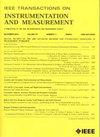Impact of Insulation Degradation Length, Severity, and Boundary on Cable Defect Localization Using Broadband Impedance Spectrum
IF 5.6
2区 工程技术
Q1 ENGINEERING, ELECTRICAL & ELECTRONIC
IEEE Transactions on Instrumentation and Measurement
Pub Date : 2025-06-20
DOI:10.1109/TIM.2025.3581621
引用次数: 0
Abstract
Insulation degradation is a common type of minor defect in cables and often exhibits a large spatial scale. Broadband impedance spectrum (BIS), as a frequency-domain reflectometry (FDR) technique, is effective for diagnosing and localizing such defects. However, most existing studies assume concentrated defects and overlook the effects of defect length, severity, and boundary, which are critical in the context of insulation degradation. This article systematically investigates these factors in coaxial cables through rigorous theoretical derivation, supported by simulation validation. The results show that while the location of the defect start remains unaffected, the localization of the defect end is shifted. This shift increases linearly with defect length and severity and further propagates to subsequent discontinuities along the cable. Moreover, defect boundaries introduce additional shifts, which are related to the integral of the relative permittivity variation across the boundary region. The boundary also reduces the amplitude and broadens the width of the associated localization peaks. The applicability of these conclusions to coaxial power cables is discussed, and a method is proposed for identifying long spatial-scale defects based on BIS measurements from both cable terminals. These findings provide theoretical insights and practical guidance, serving as a supplement to existing localization methods based on BIS.利用宽带阻抗谱分析绝缘退化长度、严重程度和边界对电缆缺陷定位的影响
绝缘劣化是电缆中常见的一种小缺陷,通常具有较大的空间尺度。宽带阻抗谱(BIS)作为一种频域反射测量(FDR)技术,是诊断和定位此类缺陷的有效手段。然而,现有的研究大多假设缺陷集中,忽略了缺陷长度、严重程度和边界的影响,而缺陷长度、严重程度和边界对绝缘退化至关重要。本文通过严格的理论推导和仿真验证,系统地研究了同轴电缆中的这些因素。结果表明,在缺陷起始位置不受影响的情况下,缺陷末端位置发生了偏移。这种位移随缺陷长度和严重程度线性增加,并进一步沿电缆传播到后续的不连续。此外,缺陷边界引入了额外的位移,这与跨边界区域的相对介电常数变化的积分有关。边界还降低了相关局部化峰的振幅并拓宽了其宽度。讨论了这些结论对同轴电力电缆的适用性,并提出了一种基于电缆两端BIS测量的长空间尺度缺陷识别方法。这些发现提供了理论见解和实践指导,是对现有基于BIS的定位方法的补充。
本文章由计算机程序翻译,如有差异,请以英文原文为准。
求助全文
约1分钟内获得全文
求助全文
来源期刊

IEEE Transactions on Instrumentation and Measurement
工程技术-工程:电子与电气
CiteScore
9.00
自引率
23.20%
发文量
1294
审稿时长
3.9 months
期刊介绍:
Papers are sought that address innovative solutions to the development and use of electrical and electronic instruments and equipment to measure, monitor and/or record physical phenomena for the purpose of advancing measurement science, methods, functionality and applications. The scope of these papers may encompass: (1) theory, methodology, and practice of measurement; (2) design, development and evaluation of instrumentation and measurement systems and components used in generating, acquiring, conditioning and processing signals; (3) analysis, representation, display, and preservation of the information obtained from a set of measurements; and (4) scientific and technical support to establishment and maintenance of technical standards in the field of Instrumentation and Measurement.
 求助内容:
求助内容: 应助结果提醒方式:
应助结果提醒方式:


